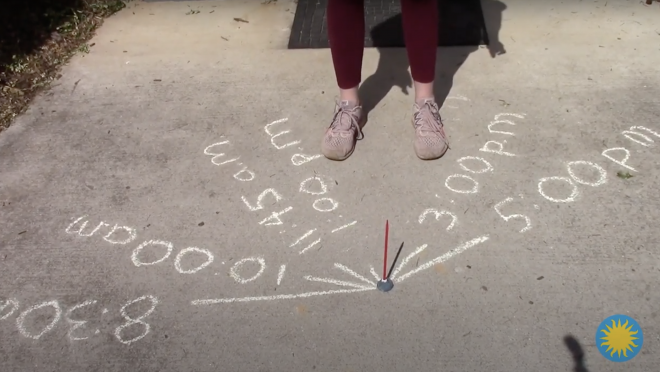Why is My Shadow Shorter Sometimes and Longer Other Times?
Why is My Shadow Shorter Sometimes and Longer Other Times?
This sequence of videos leads students through activities to help them answer the question, “Why is my shadow shorter sometimes and longer other times?” In the introductory video, the materials are described. In the first video directed towards students, students share their initial ideas about the question. In subsequent videos, students make and record observations of shadows, develop and use a model to figure out the Sun’s apparent daily pattern of motion in the sky, and check the accuracy of their model by observing photographs of the Sun. At the end, students explain why their shadow is shorter sometimes and longer other times.
Students are introduced to the question of why Miss Sarah's shadow was shorter at lunchtime and longer the next morning. Students are asked to observe their shadow to learn more about shadows.
Students learn that shadows are created when objects block light from shining on the ground. Students are asked to trace the shadow of a stick five times throughout the day.
Students review the stick's shadow pattern. Students are asked to use a model to figure out where the Sun was in the sky to create the shadow pattern they observed.
Students review how the Sun moved in the sky using the model they created. Students are asked to view 360-degree photos of the Sun at five different times of the day to check the accuracy of their model.
Students review what they observed from the 360-degree photos. Students are asked to use the model they created as well as the data they collected to explain why Miss Sarah's shadow was shorter at lunchtime and longer the next morning.



